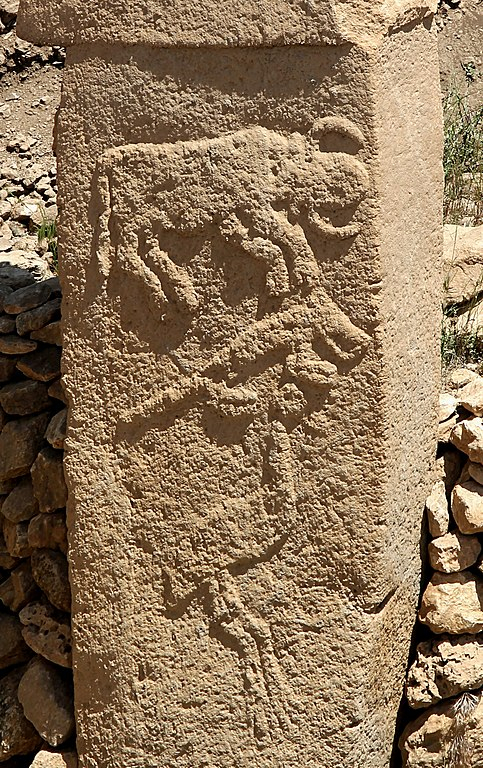German archaeologist Klaus Schmidt has made one of the most startling discoveries of the era, six miles from Urfa, an ancient city in southeastern Turkey, where he found a massive carved stone of about 13,000 years old crafted by ancient humans without the knowledge of metal tools or even pottery. As it turned out, the oldest temple on the earth, known as Göbekli Tepe, predates even the oldest of Egyptian Pyramids.
In History Channel TV series, experts have already questioned the creation of Egypt pyramids as the Egyptians did not have such technologically advanced tools to build such giant architectures at that time.
While talking about Göbekli Tepe which is claimed to be older than the pyramids, it should be noted that the oldest temple on earth stands as evidence that thousands of years ago people belonged to the ancient cultures were capable of quarrying, lifting into position and building megalithic temples using multi-ton blocks of stone. Some of the pillars of the temple weigh around 10 to 20 metric tons with one still in the quarry weighing 50 tons.
The Göbekli Tepe stone carvings not possible without laser technology
After the discovery of Göbekli Tepe, archaeologist Klaus Schmidt who had worked on the archaeological site over a decade was convinced that it was the world's oldest temple. At the ancient site, he found the standing stones which were arranged in circles on the hillside four other ring-shaped pillars.
Each of these rings had a roughly similar layout and in the centre, the excavators found two large stone T-shaped pillars encircled by slightly smaller stones facing inward. Schmidt said that the tallest pillars tower 16 feet weigh between seven and ten tons.
Some of these pillars also had carved structures of foxes, lions and scorpions. The archaeologist had pointed toward the great stone rings and said, "This is the first human-built holy place."

World's oldest temple
There are several impressive ancient structures, which were built with multi-ton blocks of stone in Central, South and North America as well as in Asia, Europe and Africa. Examples like ancient temples in Bolivia and Peru, archaeologists have found the remnants of Ollantaytambo, Sacsayhuaman and Puma Punku among others.
In these temples, ancient builders have used multi-ton blocks of stone, some of which weigh dozens of tons. Some of these stone blocks or structures showed cuts, which can be made only by using laser technology, which was not available during the prehistoric age.
Compass never works on these stones
In terms of megalithic remains of Puma Punku, there are some stones, whose precision is out of this world and show magnetic anomalies. When someone places a compass near or on the stones the device doesn't point towards north.
However, as per the researchers, more they learn about the temples, more they are left awe-struck by the secrets embedded in them. Despite studying these structures for several years, the archaeologists are still confused about the engineering marvel and failed to understand how the ancient people were able to manipulate and work on stones with such ease.
Unlike other temple remains
However, not far from the cradle of civilization, Schmidt found these buried remains of a temple different in every sense. The name Göbekli Tepe translates into Potbelly Hill. Located almost 12 km northeast of the city of Şanlıurfa, the exact details of the massive structure's function remains a profound enigma to researchers, despite the fact that the first traces of the archaeological site buried beneath the surface were found in 1963.
In fact, earlier the site was mistaken as a Byzantine cemetery and in 1994, Schmidt from the German Archaeological Institute decided to excavate the site for the first time. With the experience of excavating Nevalı Çori, which is an early Neolithic settlement in Turkey, Schmidt saw the possibility that some of the rocks and slabs at Göbekli Tepe were prehistoric. As per some experts, some of the oldest structures at Göbekli Tepe date back to at least the 10th millennium BC.
The layers of the site
Göbekli Tepe's history is divided into three layers. As per the archaeologists, layer three is the oldest where the builders created the circular compounds at the site and the most notable characteristics are the t-shaped limestone pillars. Recent research revealed that there are at least 16 additional circles still buried beneath the surface.

In the layer, builders constructed smaller rectangular rooms, and layer one consisted of loose sediments caused by erosion and the use of the hill for agricultural purposes. Experts claimed that for reasons that remain unclear to this date, Göbekli Tepe was deliberately backfilled around 8,000 BC.
However, it should be noted that just five percent of the site has been excavated and there is more to find at the site as massive historical treasure trove still lies hidden beneath the surface. By using the radiocarbon method researchers found that the end of layer three can be traced back to around 9000 BC, while it is believed that the elevated location may have functioned as a spiritual centre during 10,000 BC.
It means that the structure was built before the so-called Neolithic Revolution which also predates the oldest of Egyptian pyramids by at least 8,500 years.









